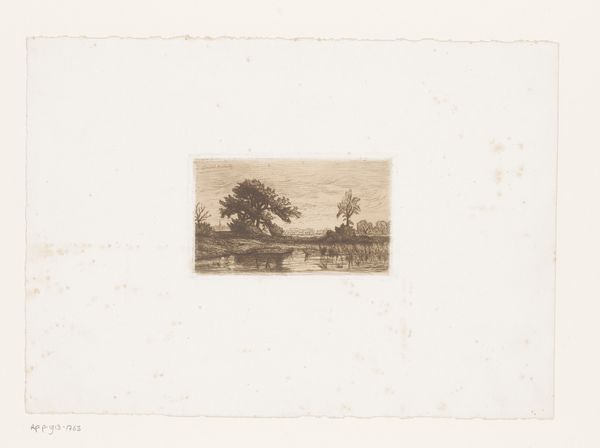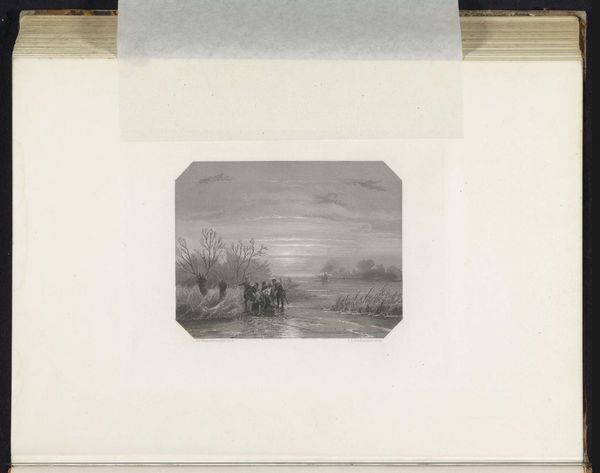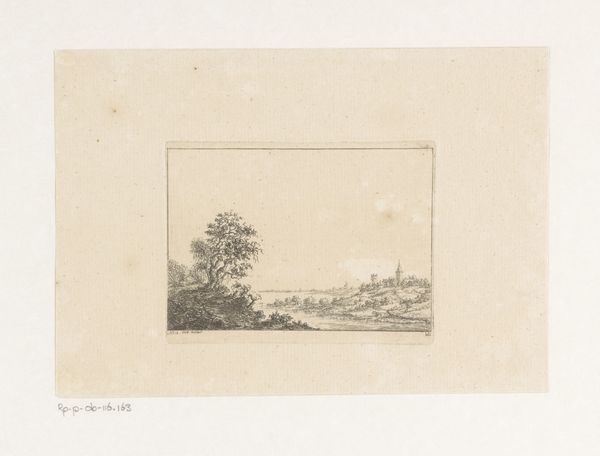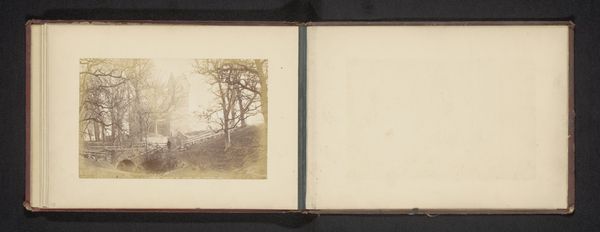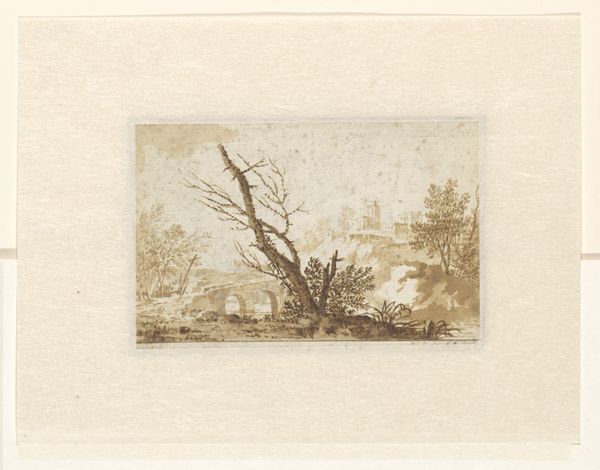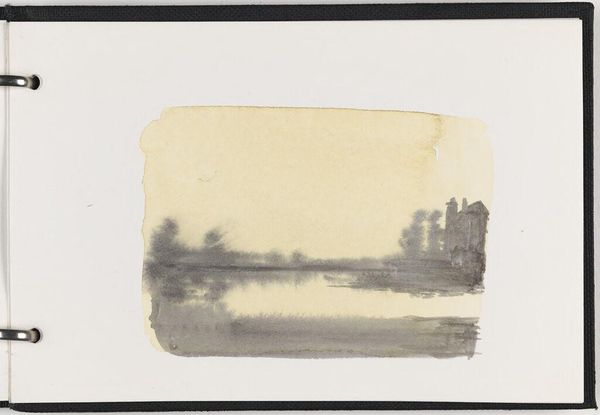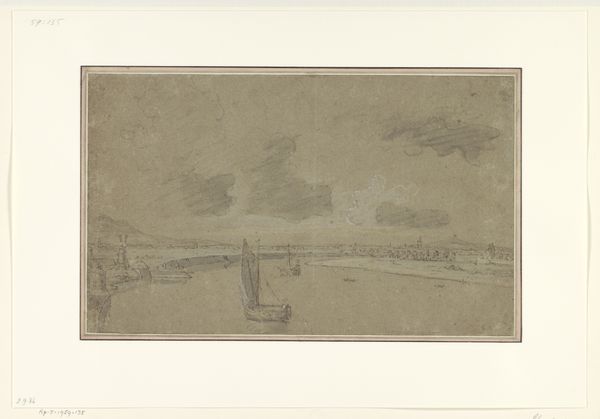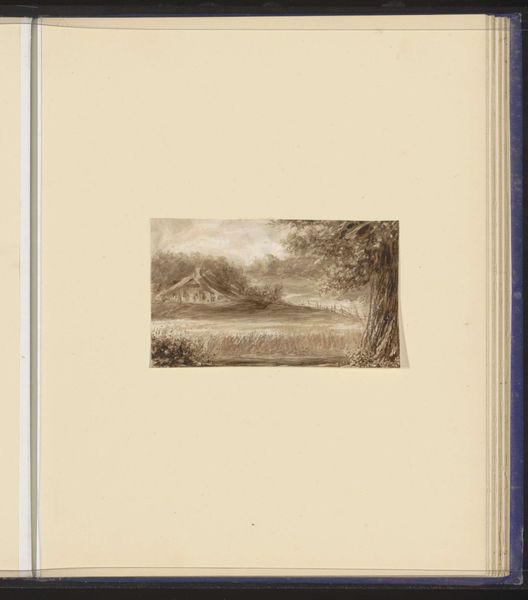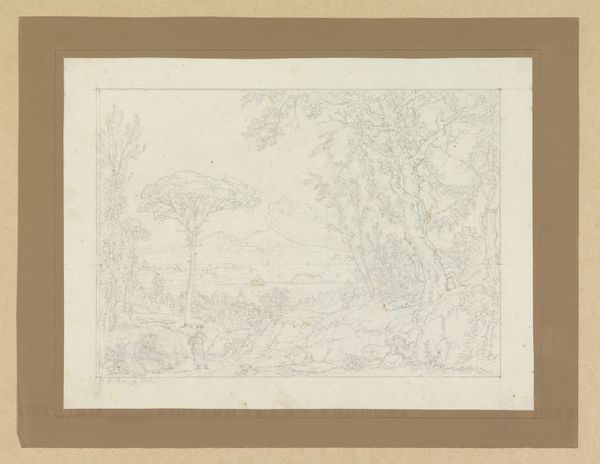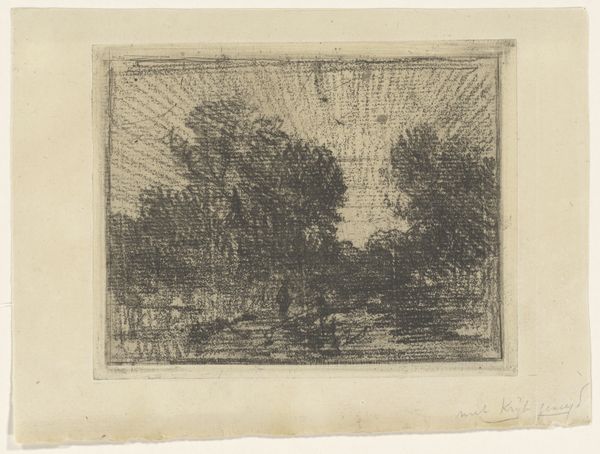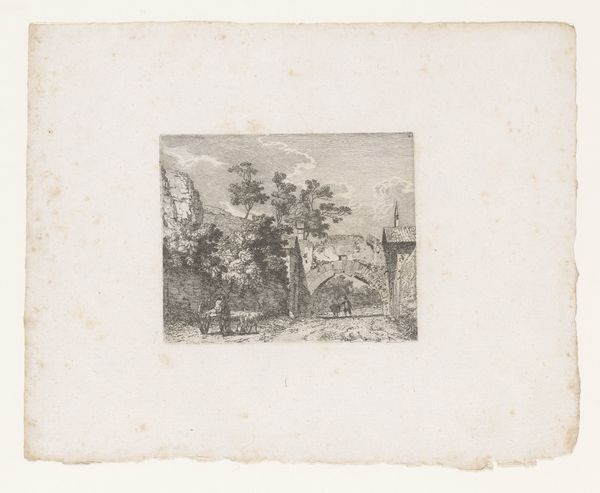
Copyright: Public domain
Jan Mankes made this etching of trees along the canal at the Woudsterweg, in the Netherlands, around the time of the First World War. The image is made up of the canal waters that reflect the trees around it. In the background are a mass of trees that cover the horizon. Mankes was working in a cultural landscape marked by both the devastation of war and the emergence of new artistic movements. This etching presents a serene view of the Dutch countryside. But look closer: the bare trees, rendered with such delicate lines, might suggest a subtle comment on the impact of conflict on the natural world. The canal itself would have been a busy transportation hub; the artist’s decision to reduce its activity to one solitary figure could reflect his pacifist and anti-urban feelings. Art history allows us to consider the artist’s relationship to these broader historical shifts. By examining letters, exhibition reviews, and other documents, we can start to piece together the social and institutional forces that shaped Mankes' artistic vision.
Comments
No comments
Be the first to comment and join the conversation on the ultimate creative platform.
